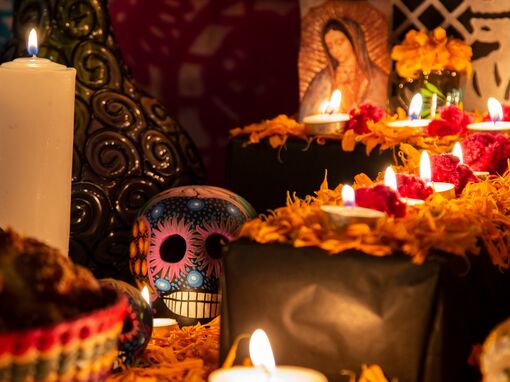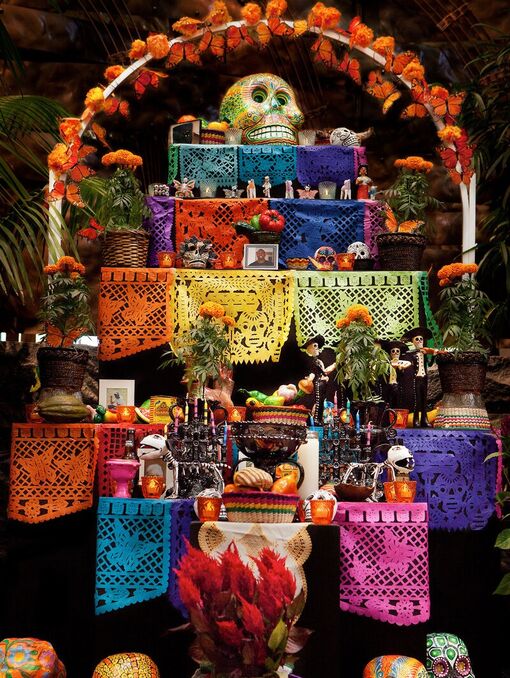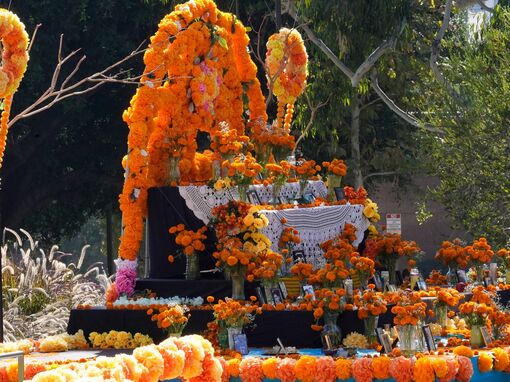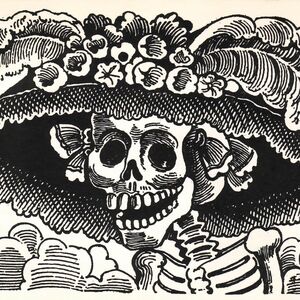
Lindsey & Justin
Lindsey & Justin
Día de los Muertos

Lindsey first learned about this sacred holiday while watching one of her favorite childhood shows, Lizzie McGuire, and has loved everything about it ever since. How serendipitous that their wedding happens to fall on this beloved holiday! Because neither Justin nor Lindsey have Latin American heritage, the wedding weekend will not include an overt Dia de los Muertos celebration. However, we are hoping to tastefully include a few elements while respecting a culture that we recognize is not our own (as much as we may wish it were).
Dia de los Muertos, or Day of the Dead, is a Latin American (primarily Mexican) holiday honoring the dead. It is a vividly colorful celebration among families and communities with food, music, parades, and costumes. At its core, Dia de los Muertos is a sacred celebration of life and its impermanence. Families create ofrendas, or offerings, to honor their dead ancestors and to welcome and guide them home. Traditionally, these ofrendas are comprised of the following four elements:
Earth
Represented by food, particularly pan de muerto (bread of the dead). Favorite snacks and treats of the deceased are also often included and are said to replenish their souls after the long journey home.
Air
Represented by papel picado, a colorful paper banner that's a bit like a doily, with intricately cut designs that allow air to move through it.
Water
Similar to the sweet bread, it's said to quench the thirst of the deceased after their long journey home.
Fire
Lit candles, traditionally in the shape of a cross, are meant to represent the cardinal directions to help guide spirits home.

Other important elements:
Sugar skulls
This is probably the image most associated with the holiday. In its most traditional form, a "calavera" (sugar skull) is handmade from sugar using a mold then intricately decorated, including an ancestor's name across the forehead. They aren't actually meant to be eaten but are instead used as decor on the ofrendas and at tombs. There are many modern adaptations including edible candles/cookies, and decorative pieces made from plastic and other non-edible materials.

La Catrina/Calacas
Calacas, aka skeletons, are prominent throughout the celebration. La Catrina was originally created by cartoonist Jose Guadalupe Posada as a piece of social commentary on Mexico's classism. Over time, the original image has adopted new life with elaborate costuming (originally added by Diego Rivera himself!) and is now synonymous with the holiday. Inspired by La Catrina, both women and men dress in elaborate costuming with face paint and decorative headwear. It is over-the-top fabulous in every way.
Marigolds
Cempasuchil, or marigolds, have a strong and distinct scent that is thought to attract the deceased. They grow plentifully in Mexico in the fall and are used to adorn ofrendas and gravesites.


